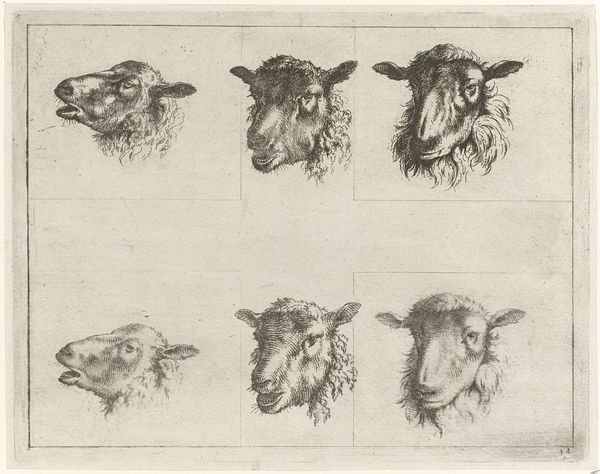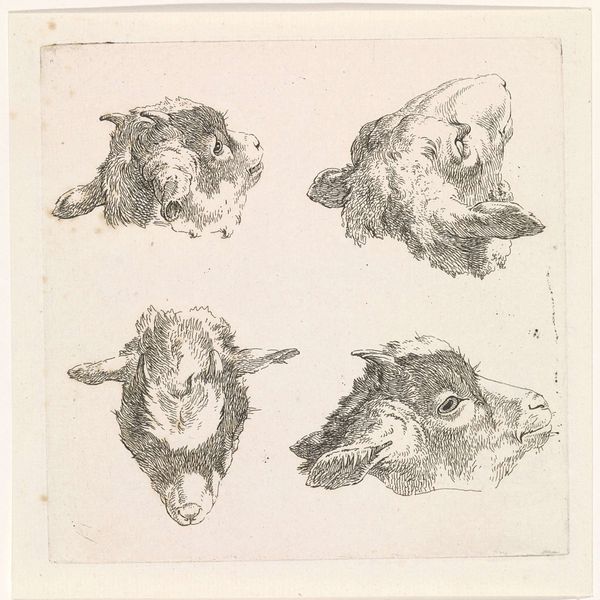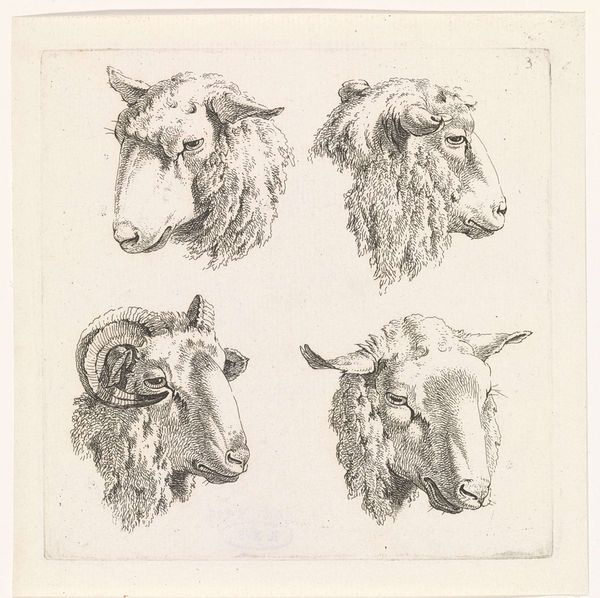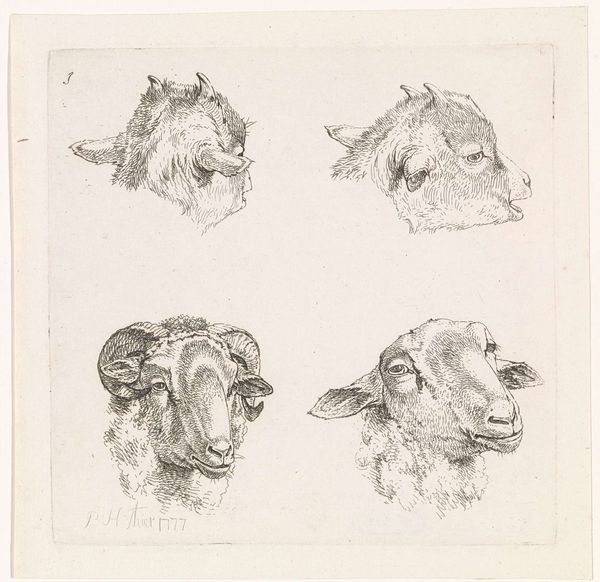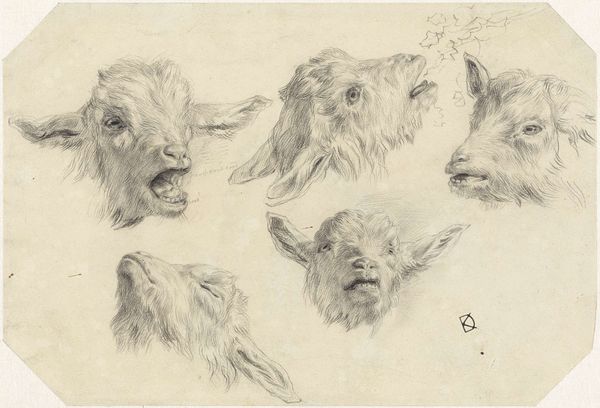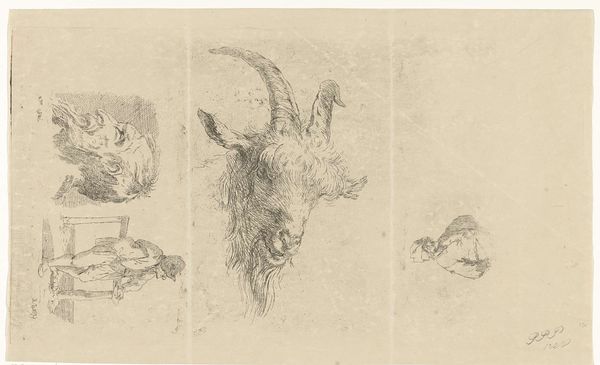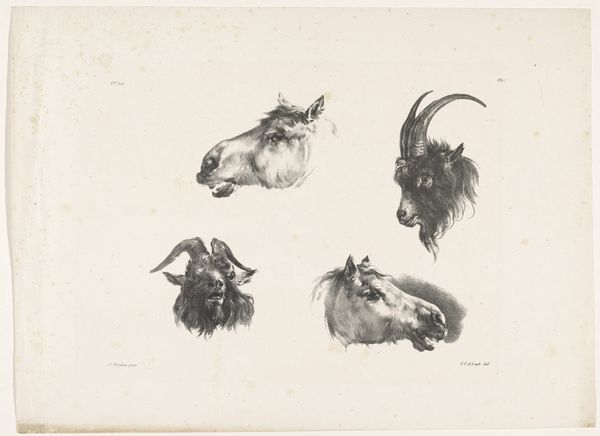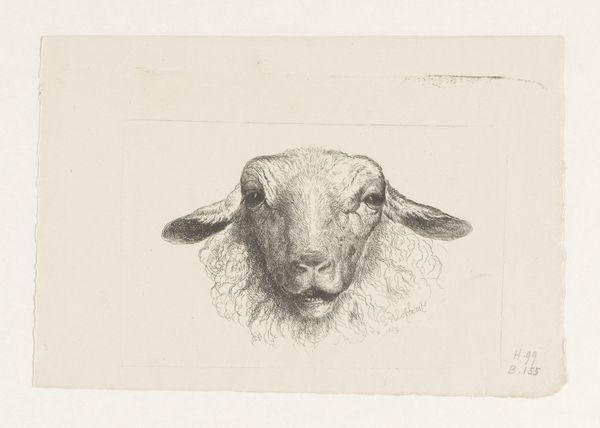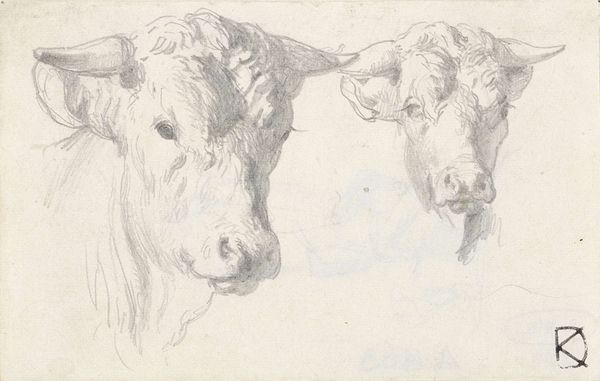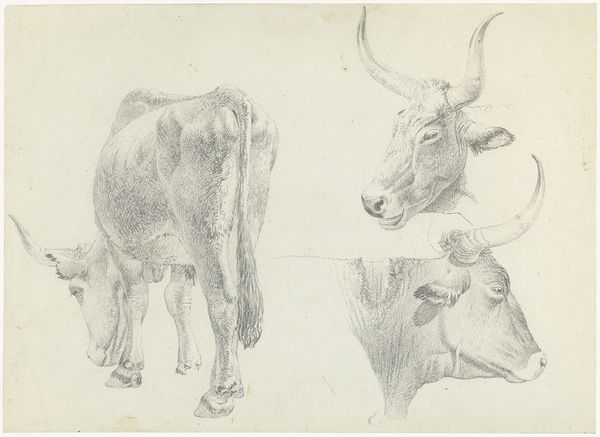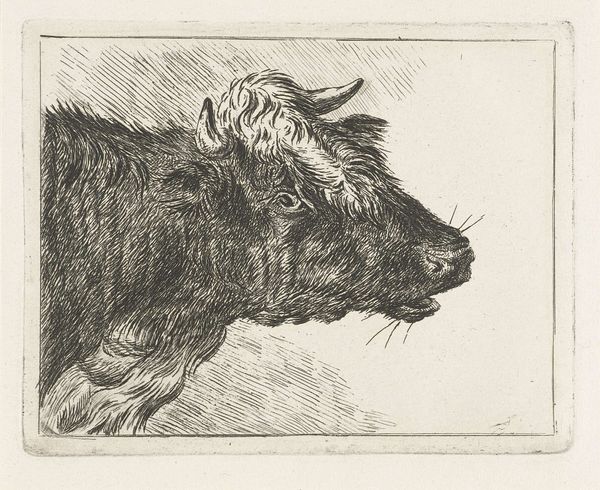
drawing, pen
#
portrait
#
drawing
#
light pencil work
#
quirky sketch
#
pencil sketch
#
incomplete sketchy
#
personal sketchbook
#
sketchwork
#
ink drawing experimentation
#
pen-ink sketch
#
sketchbook drawing
#
pen
#
fantasy sketch
#
realism
Dimensions: height 166 mm, width 211 mm
Copyright: Rijks Museum: Open Domain
Editor: So, here we have Johannes Janson’s "Studieblad met vier schapenkoppen" from between 1761 and 1784. It's pen and pencil on paper, a collection of sheep heads. There's something quite clinical, almost detached, about these studies. What do you see in terms of the process here? Curator: The stark presentation of these sheep heads compels us to consider the drawing's social context. What was the purpose of such studies in 18th-century Holland? Were these meant for scientific observation, perhaps for improving livestock? Or were they studies in animal anatomy destined for prints aimed at agricultural reforms? Editor: That's fascinating! I hadn’t considered the agricultural angle at all. It felt like an almost detached, scientific kind of project. So it could relate directly to modes of production, then? Curator: Precisely! Janson's drawings were, materially, tools. Tools of production, not necessarily artworks in the fine art sense. This approach also invites us to challenge traditional distinctions between "high art" and the everyday labor it often relied on. Note how the medium of drawing, itself a readily reproducible form, allowed for wide distribution of knowledge among the agricultural community. How might those prints later find their way into artisanal practices, like wool dyeing, and manufacturing woolen fabrics in a burgeoning textile market, or even culinary advancements and their related cookbooks. Can you start to imagine these things? Editor: I definitely can, especially knowing it might have been distributed widely as printed media. Curator: Now look closer at Janson's skill in representing different breeds or conditions through simple lines. The means of production— pen, paper, and artistic labor—reflect both the pastoral ideals and practical demands of the time. What does considering that context make you think about the art object? Editor: I see the art as a cog, then, in a larger cultural machine – related to how humans and animals are involved together in resource generation. It certainly has made me look at this seemingly simple study with a more discerning eye.
Comments
No comments
Be the first to comment and join the conversation on the ultimate creative platform.
